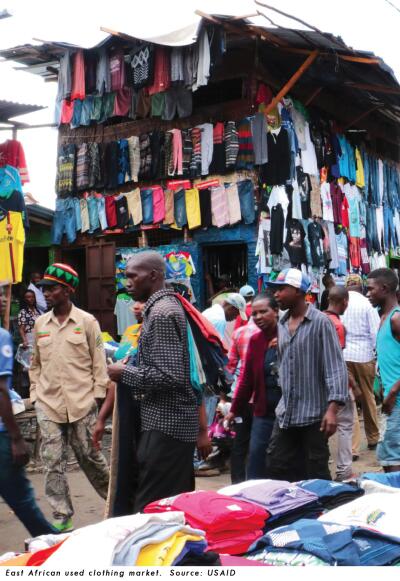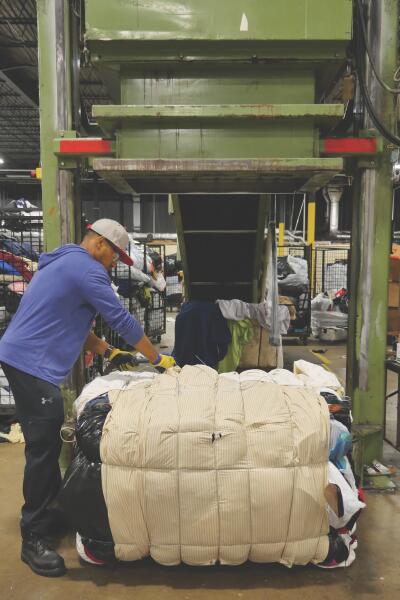More Than the Shirt Off Your Back
Everyone knows that donating used clothing helps those who are less fortunate. But how exactly does it help? New research shows that the impacts go far beyond what you might expect.
Donating used clothing to charities obviously helps clothe and employ fellow Americans, but other benefits fly below the radar: exporting worn textiles provides income to low- and middle-income foreign countries, and also helps the environment. That win-win-win situation gives new meaning to the phrase, "giving the shirt off your back."
The above quote is from the USDA's National Institute of Food and Agriculture (NIFA), which is currently funding a study focused on the export of used clothing from the United States. The study is being conducted by the Department of Apparel, Housing, and Resource Management at Virginia Tech and is expected to be completed this year.
The NIFA study builds on research conducted by the U.S. Agency for International Development (USAID) that was published last year. The USAID study, entitled, Overview of the Used Clothing Market in East Africa, examined used clothing imports in the countries of Kenya, Rwanda, Burundi, Tanzania, and Uganda.
 Why All the Fuss?
Why All the Fuss?
The USAID study was commissioned at a time when the East African Countries (EAC) were contemplating phasing out the importation of used clothing as a way to support the local textile industry. The study focused on the economic significance of the imports and what effect it has had on the domestic industry, as well what effect the import phase out might have. What the researchers found has challenged conventional thinking.
Supporting 1.4 Million People
Not everyone is aware of just how important used clothing is as an international commodity, and how important it is to local economies in the developing world. Among the USAID study's key findings is that that the import of secondhand clothing accounted for 355,000 jobs in the EAC alone, generating a total income of more than $230 million, yielding $140 million in customs revenue, and supporting an estimated 1.4 million people. The economic benefits were clearly pervasive and the trade supports a robust local economy upon which many depend.
These findings are consistent with what other research has produced. For example, a study conducted by the Nordic Council of Ministers found that secondhand textiles exported from Nordic countries, which is not a leading exporter, provided a living for an estimated 10,000 market traders and their families in Africa. The researchers conclude that the exports play an important role in poverty reduction in these countries.
Secondhand clothing is resoundingly popular because it is affordable. The USAID study states that low disposable income rates in the East Africa region makes it nearly impossible for many individuals to afford clothing produced locally. The import of used clothing, which began in the 1980s, has filled an important gap in the need for affordable clothing.
That said, a portion of the population in East Africa does have enough money to purchase brand new clothing; however, the clothing they purchase is made in China or other countries. The upshot is that the import of clothing is not affecting domestic clothing production, as domestic production (which is very labor intensive and expensive) is almost entirely an export item. The USAID report concludes that "the proposed phase out of the used clothing imports is not in the interest of the EAC or of the United States."

Environmental and Development Benefits
While there are clearly important economic benefits associated with donating used clothing, let's not forget about the environmental benefits. Reusing clothing and reducing the need for manufacturing new clothes helps save resources and mitigates climate change. It helps reduce the amount of clothing that is disposed of, which lessens the emission of CO2 and other gases that contribute to global warming.
Planet Aid also uses the net proceeds from the sale of the clothing it collects to fund international development. Read more about our work here.
